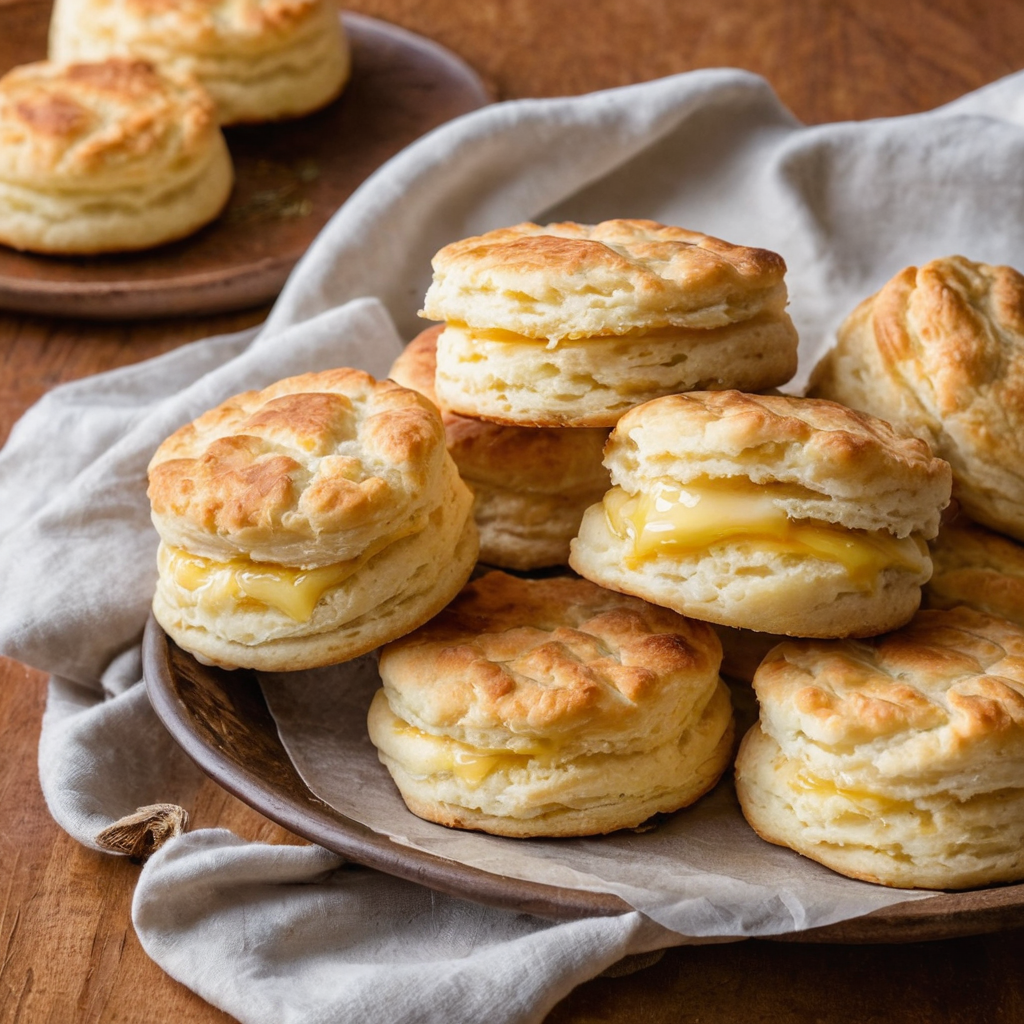A Simple and Delicious Recipe
Are you tired of store-bought biscuits that lack the flaky, buttery goodness of homemade ones? Look no further than homemade buttermilk biscuits. With only six basic ingredients and a few simple tips, you can make biscuits that are miles better than anything you can buy at the store.
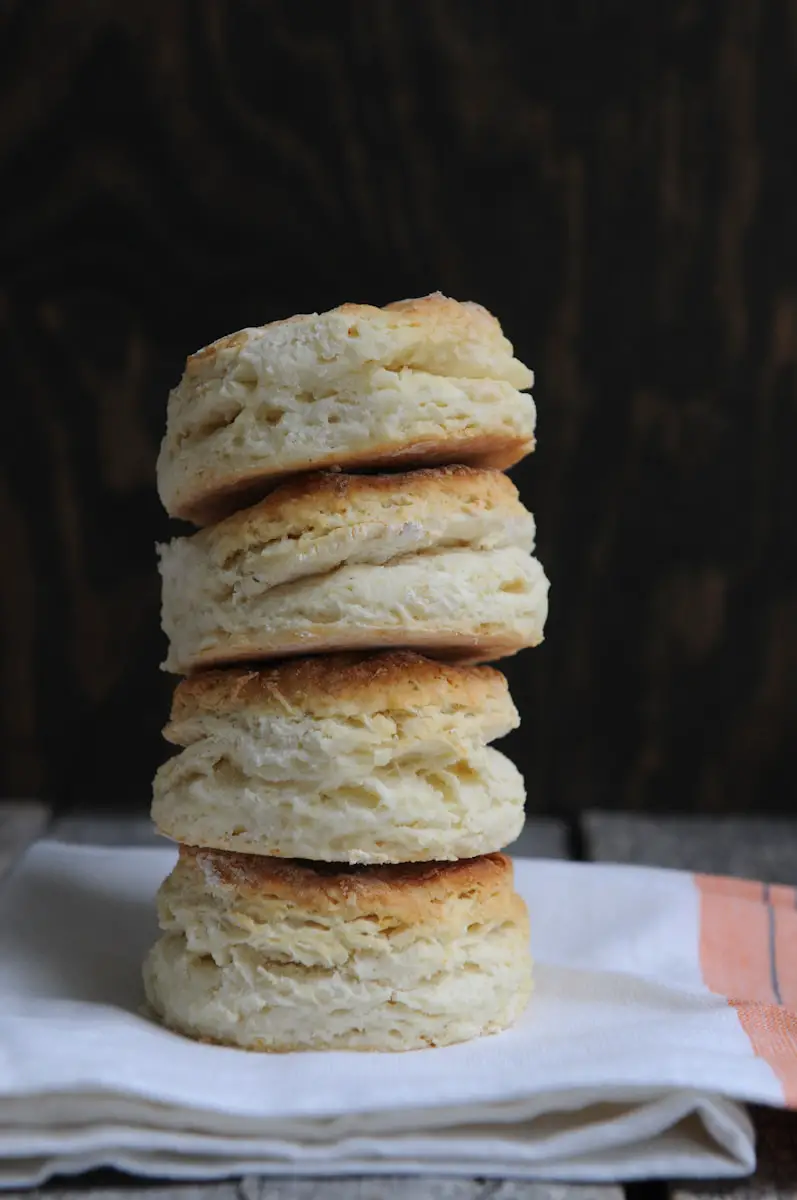
The key to making perfect buttermilk biscuits is using cold butter and buttermilk, and handling the dough as little as possible. By using the active voice and following the simple steps, you can bake biscuits that are soft, flaky, and buttery. Whether you’re making them for breakfast or as a side dish for dinner, buttermilk biscuits are sure to impress.
To make the process even easier, we’ve compiled a list of some of the best buttermilk biscuit recipes out there. From classic Southern-style biscuits to variations like cheddar, everything, and honey butter, there’s a recipe for everyone. With the help of transition words, we’ll guide you through each step of the process, ensuring that your homemade buttermilk biscuits turn out perfectly every time.
The Origin of Buttermilk Biscuits
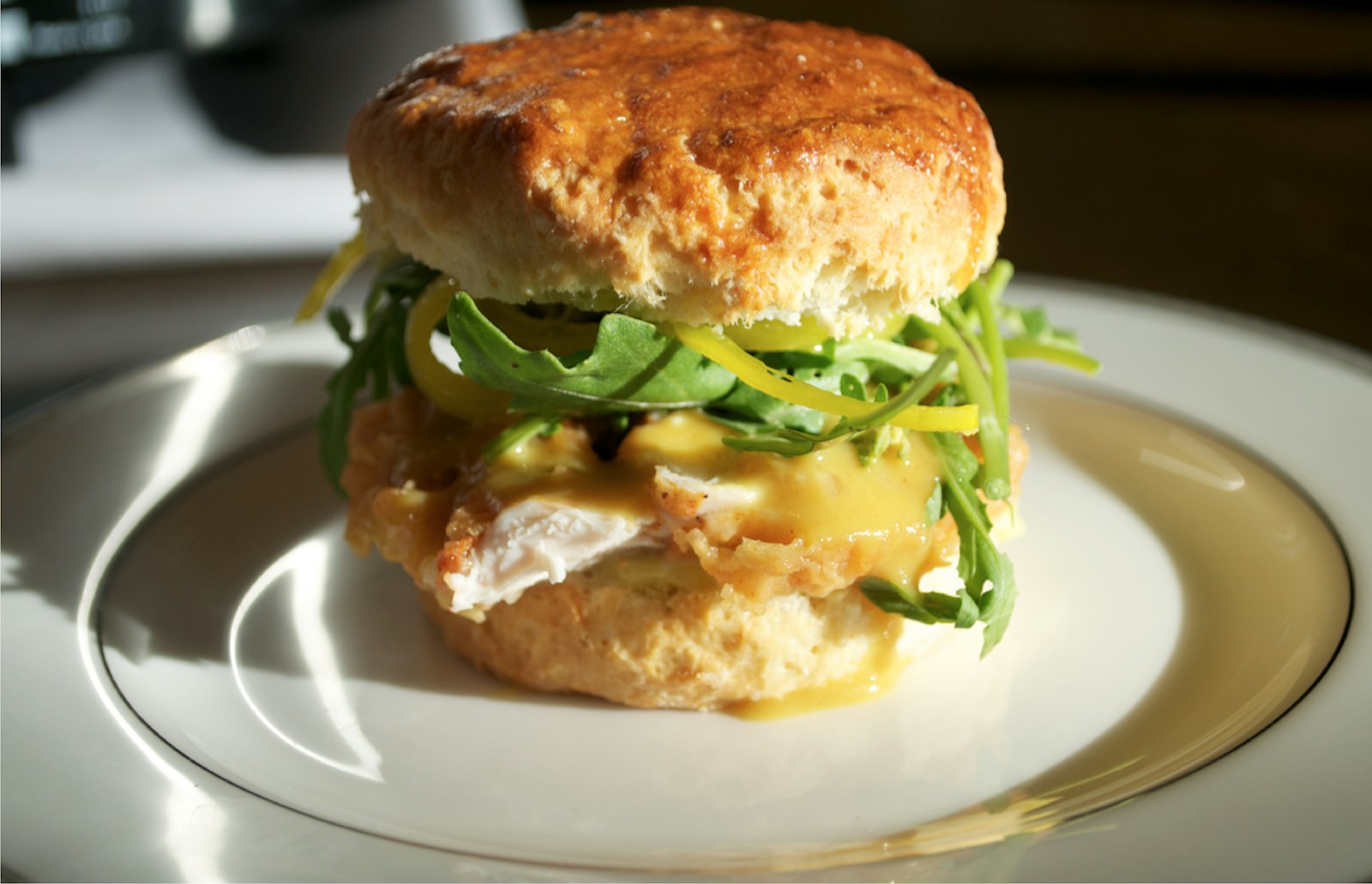
If you’re a fan of Southern cuisine, you’re probably familiar with buttermilk biscuits. These fluffy, buttery biscuits have been a staple in the South for generations and are often served alongside gravy, fried chicken, or other comfort foods. But where did these delicious biscuits come from? Let’s take a look at the historical significance and cultural impact of buttermilk biscuits.
Historical Significance
Biscuits have been around for centuries, and the first biscuits were likely made by the ancient Egyptians. These early biscuits were made from a mixture of flour and water and were baked in the sun to dry them out. Over time, biscuits evolved and were made with different ingredients, such as butter, sugar, and spices.
Buttermilk biscuits, in particular, have a unique history. Buttermilk is a byproduct of churning butter, and early settlers in the South would use the leftover buttermilk to make biscuits. The acidity of the buttermilk would react with the baking soda, causing the biscuits to rise and become fluffy. This made buttermilk biscuits a popular choice for pioneers who were traveling west and needed a portable, filling food.
Cultural Impact
Buttermilk biscuits have become a cultural icon in the South and are often associated with Southern hospitality. They are a staple at family gatherings, church potlucks, and other social events. In fact, making a good batch of buttermilk biscuits is often seen as a mark of a good Southern cook.
Buttermilk biscuits have also made their way into popular culture. They have been featured in movies, TV shows, and even songs. For example, in the movie “Steel Magnolias,” the character Ouiser Boudreaux famously says, “I’m not crazy, I’ve just been in a very bad mood for 40 years!” while making buttermilk biscuits.
In conclusion, buttermilk biscuits have a rich history and cultural significance in the South. Whether you’re a seasoned biscuit maker or a newcomer to Southern cuisine, these delicious biscuits are sure to satisfy.
Selecting Ingredients for Buttermilk Biscuits
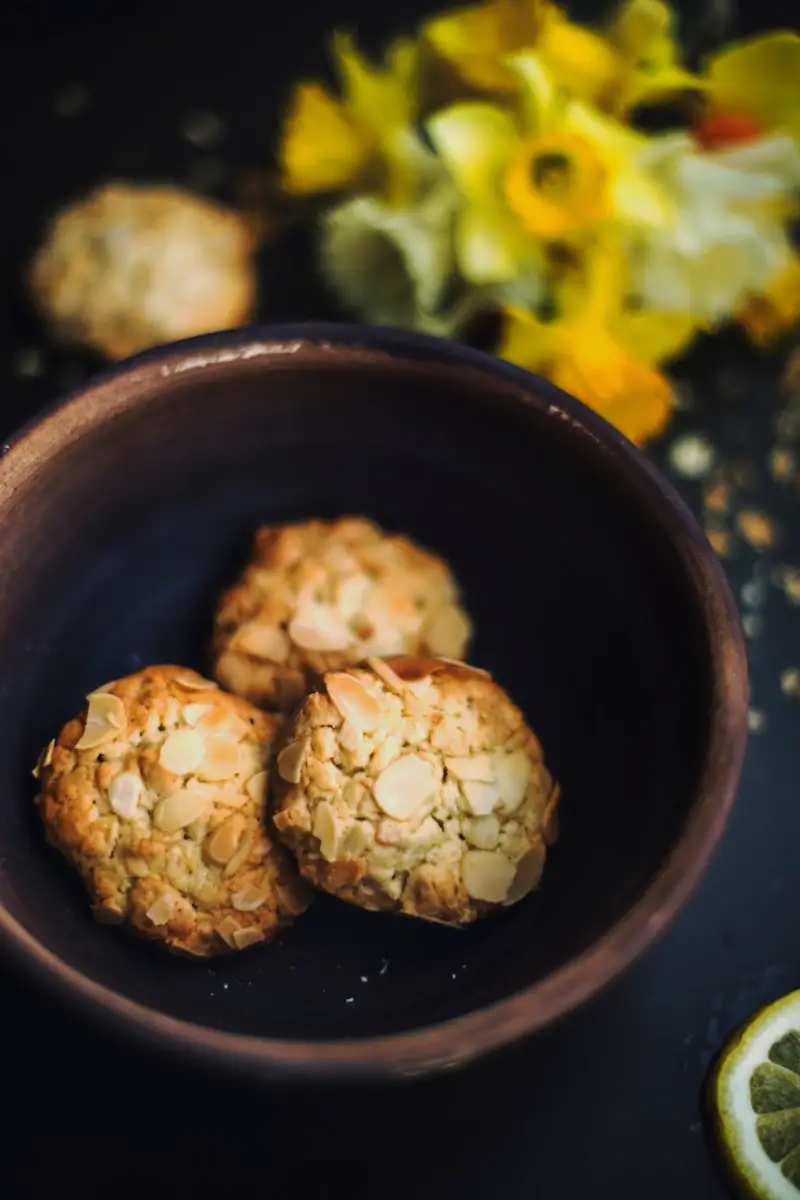
Making perfect buttermilk biscuits requires selecting the right ingredients. The following subsections will help you choose the best ingredients for your biscuits.
Flour Types
The type of flour you use will affect the texture and taste of your biscuits. All-purpose flour is a popular choice for making biscuits because of its versatility. It has a medium protein content that makes it suitable for biscuits that are tender and flaky. However, if you want a more delicate biscuit, you can use cake flour, which has a lower protein content. Self-rising flour is another option, which already has leavening agents added to it.
Choosing the Right Buttermilk
Buttermilk is a crucial ingredient in buttermilk biscuits. It adds tanginess and moisture to the biscuits. When selecting buttermilk, make sure to choose the full-fat version for the best results. Low-fat or non-fat buttermilk may result in dry and tough biscuits. You can also use a substitute for buttermilk, such as milk with vinegar or lemon juice added to it.
Importance of Cold Butter
Cold butter is essential for making flaky biscuits. The cold butter will melt in the oven, creating pockets of steam that will lift the layers of dough, resulting in a light and airy biscuit. It’s best to use unsalted butter and cut it into small pieces before adding it to the flour mixture. You can also freeze the butter before grating it into the flour mixture for even distribution.
By selecting the right ingredients, you can make the perfect buttermilk biscuits that are tender, flaky, and delicious. Remember to use cold butter, full-fat buttermilk, and the right flour type for the best results.
Mixing and Preparing the Dough
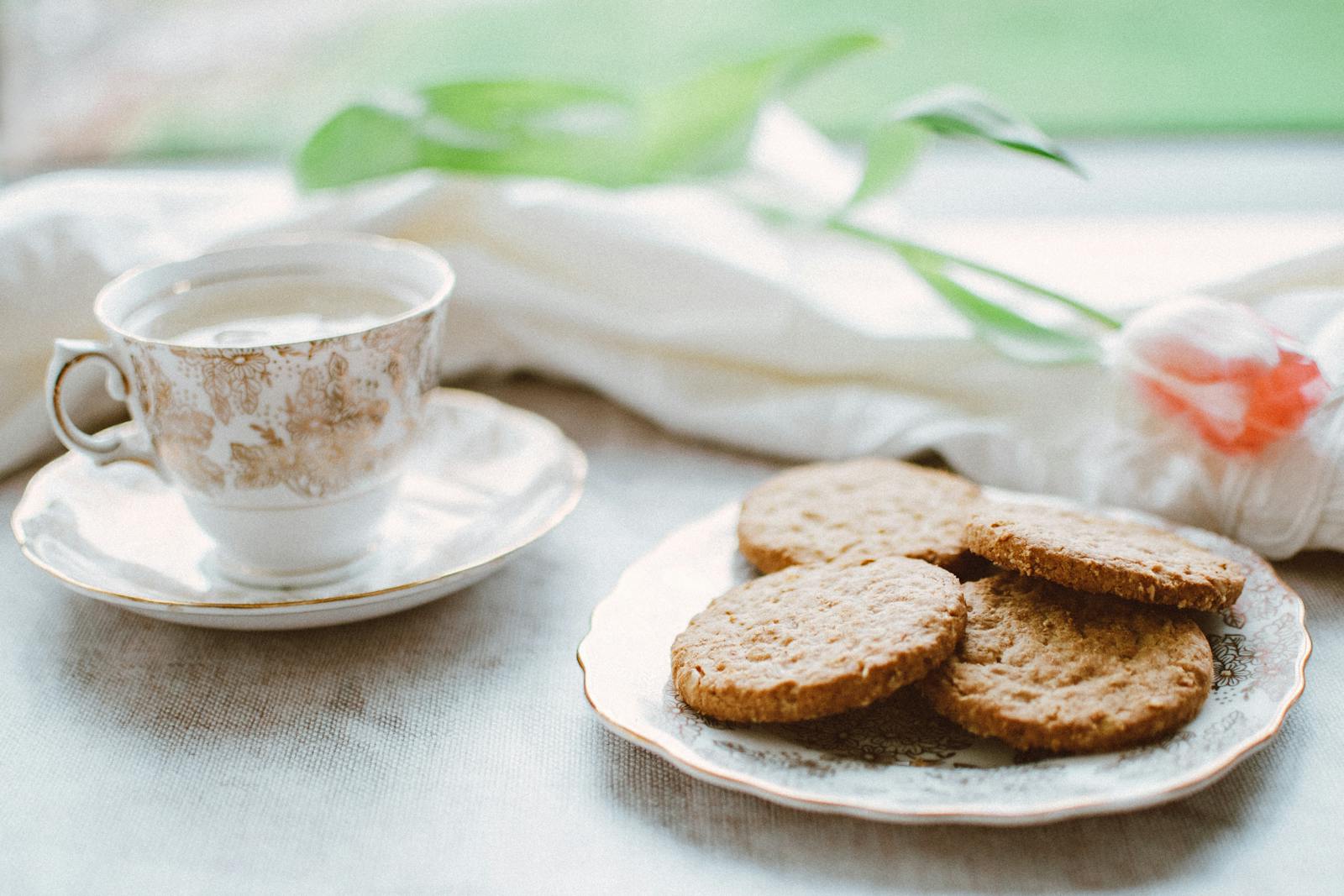
Making homemade buttermilk biscuits is a simple process that requires a few key techniques to ensure the perfect result. In this section, we will discuss the proper techniques for mixing and preparing the dough to create light, flaky biscuits.
Techniques for Mixing
When mixing the dough for your buttermilk biscuits, it’s important to keep a few key techniques in mind. First, use cold butter and buttermilk to ensure that the biscuits rise properly and have a flaky texture. Cut the butter into small pieces and use a pastry cutter or food processor to work it into the flour mixture until it resembles coarse crumbs.
Next, avoid overworking the dough, as this can result in tough, dense biscuits. Mix the dough until it just comes together, then turn it out onto a floured surface and gently knead it a few times to bring it together.
Dough Consistency
The consistency of your dough is also important when making buttermilk biscuits. You want the dough to be soft and pliable, but not too sticky. If the dough is too dry, your biscuits will be tough and dry. If the dough is too wet, your biscuits will be dense and heavy.
To achieve the perfect consistency, start by adding the buttermilk to the dry ingredients a little at a time, mixing gently until the dough comes together. If the dough is too dry, add a little more buttermilk. If the dough is too wet, add a little more flour.
By following these simple techniques for mixing and preparing your dough, you can create delicious, flaky buttermilk biscuits that are sure to impress.
Rolling and Cutting the Biscuits
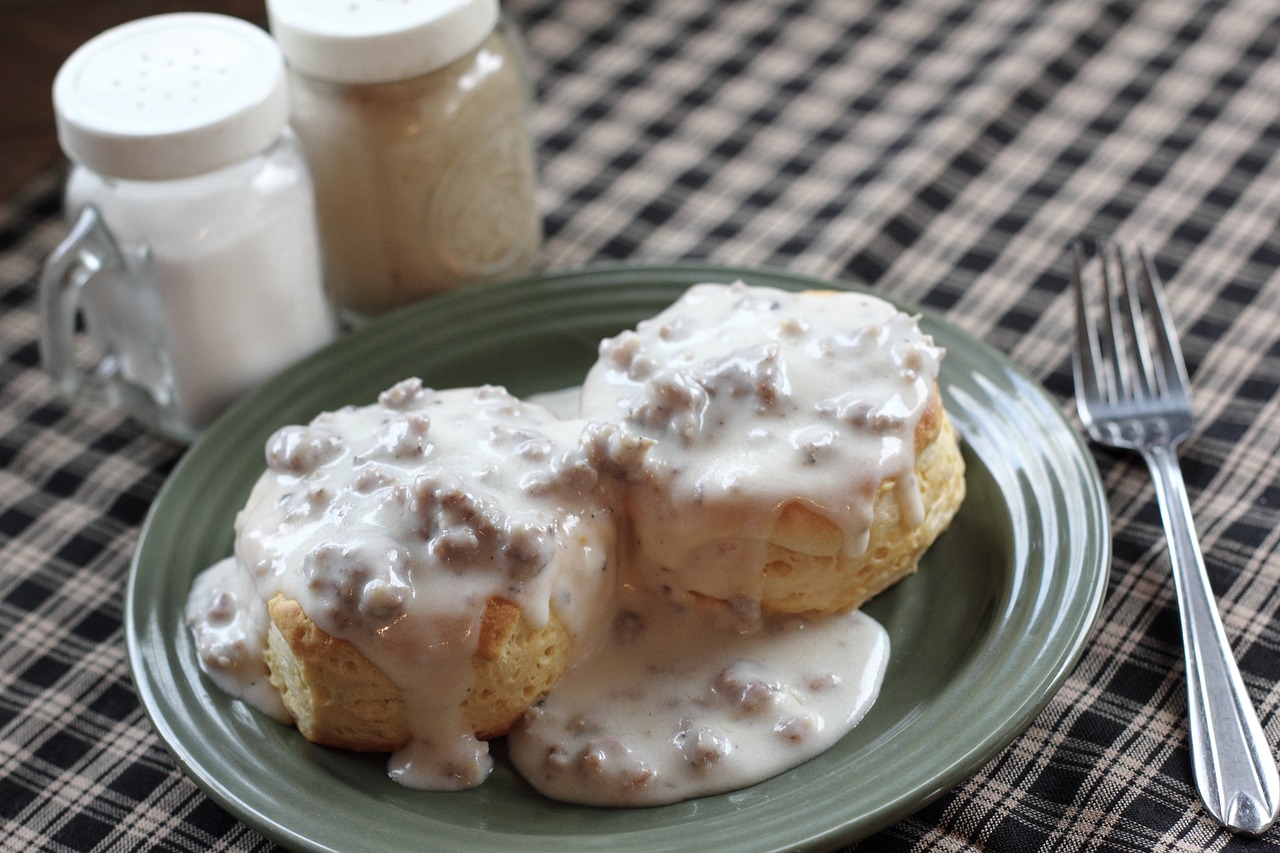
Making homemade buttermilk biscuits is a delightful experience, and rolling and cutting the dough is an essential step in the process. In this section, we will discuss the thickness and size of the biscuits, as well as using biscuit cutters.
Thickness and Size
When it comes to thickness, you want your biscuits to be about 1/2 inch thick. This thickness ensures that the biscuits will rise and be fluffy on the inside. If you make them too thin, they will be crispy and flat. If you make them too thick, they will not cook all the way through.
As for size, you can use a biscuit cutter to make them uniform, or you can use a knife to cut them into squares. If you use a biscuit cutter, aim for a diameter of 2 1/2 to 3 inches. This size ensures that the biscuits will cook evenly and be the perfect size for serving.
Using Biscuit Cutters
If you decide to use biscuit cutters, make sure to dip them in flour before each cut. This step ensures that the dough does not stick to the cutter and that you get clean cuts. You can also use a sharp knife to cut the dough into squares if you prefer.
When cutting the dough, make sure to press straight down and not twist the cutter. Twisting the cutter can cause the biscuits to rise unevenly or not at all. Once you have cut out all the biscuits, gently reroll the scraps and cut out more biscuits until all the dough is used.
In conclusion, rolling and cutting the dough is an essential step in making homemade buttermilk biscuits. By following these tips on thickness and size and using biscuit cutters, you can ensure that your biscuits turn out perfectly every time.
Baking Perfect Buttermilk Biscuits
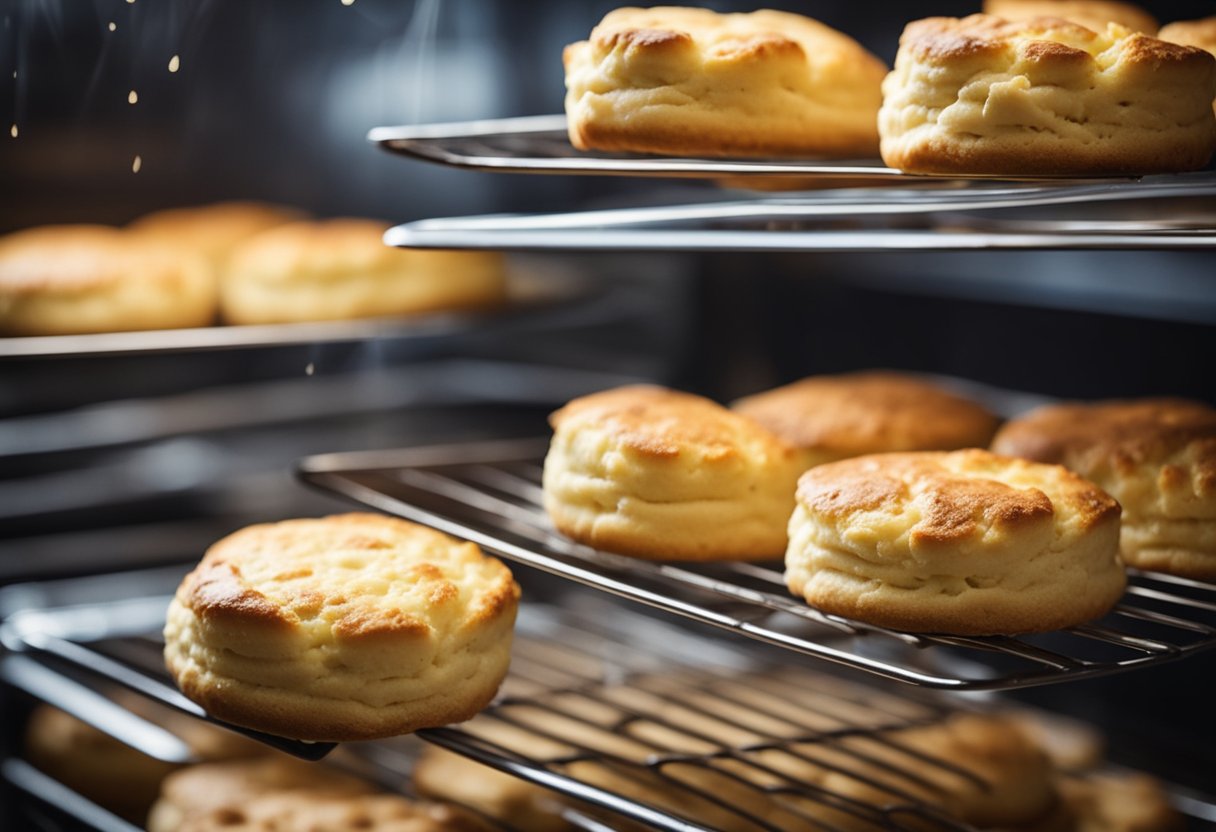
Making buttermilk biscuits from scratch is not as difficult as you might think. With just a few tips and tricks, you can achieve perfectly flaky and tender biscuits every time. Here are some guidelines to help you bake the perfect buttermilk biscuits.
Oven Temperature
The oven temperature is crucial for baking perfect buttermilk biscuits. Preheat your oven to 425°F (218°C) and make sure it has reached the desired temperature before putting the biscuits in. A hot oven will help the biscuits rise and create a crispy crust.
Baking Time
The baking time for buttermilk biscuits depends on the size and thickness of the biscuits. Generally, it takes about 12-15 minutes to bake a batch of biscuits. However, keep an eye on them and look for a golden brown color on the top and bottom. You can also check the internal temperature of the biscuits using a thermometer. The temperature should be around 200°F (93°C).
Here are some additional tips to help you achieve perfect buttermilk biscuits:
- Use cold butter and buttermilk for flaky biscuits.
- Don’t overwork the dough. Mix until just combined and knead lightly.
- Cut the biscuits with a sharp biscuit cutter or knife.
- Place the biscuits close together on the baking sheet for soft sides.
- Brush the tops of the biscuits with melted butter for extra flavor.
By following these tips, you can bake perfect buttermilk biscuits every time. Get creative and add your own twist to the recipe to make it your own. Use active voice and transition words to make your writing clear and concise.
Serving Suggestions for Buttermilk Biscuits
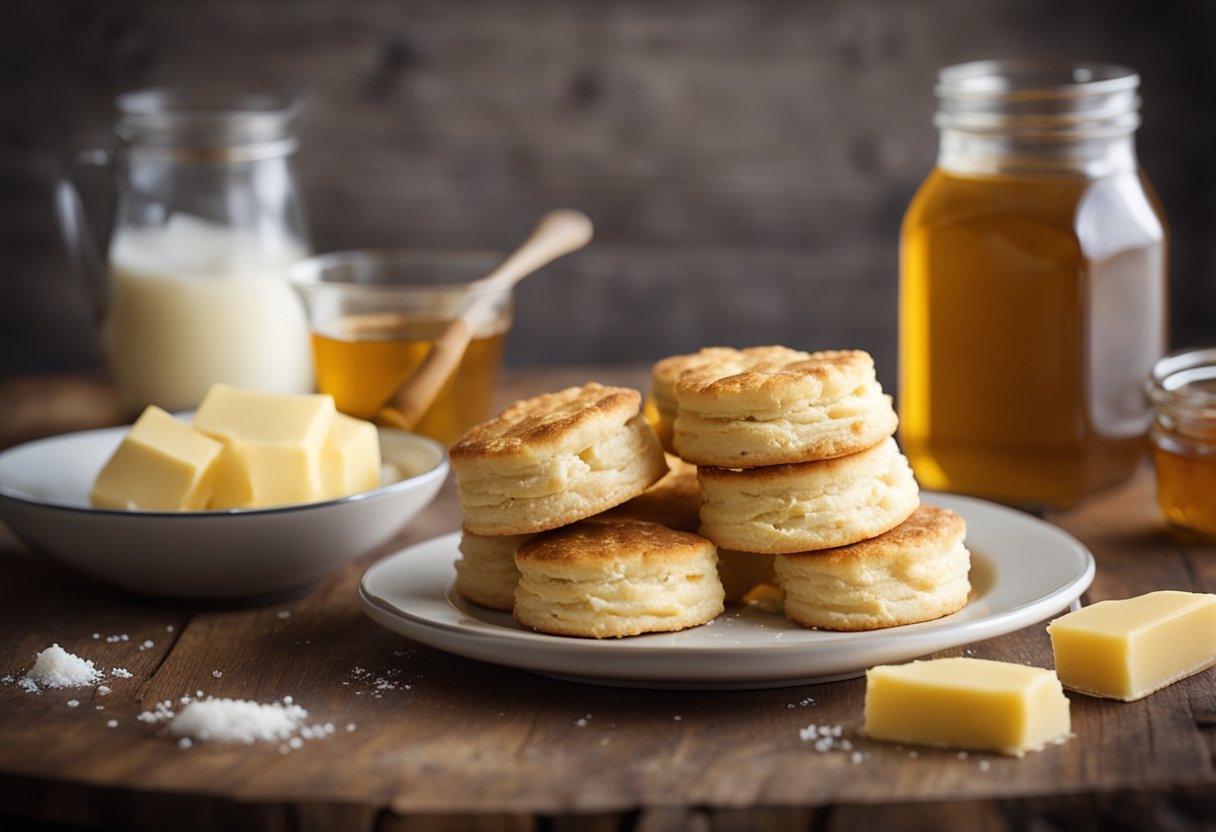
When it comes to serving buttermilk biscuits, there are many different ways to enjoy them. Whether you’re serving them for breakfast, brunch, or dinner, these versatile biscuits can be paired with a variety of accompaniments and presented in creative ways.
Accompaniments
Buttermilk biscuits can be served with both sweet and savory accompaniments. Here are a few ideas:
- Honey and butter: For a simple yet delicious option, spread warm biscuits with butter and drizzle with honey.
- Jam or jelly: Pair buttermilk biscuits with your favorite jam or jelly for a classic breakfast option.
- Gravy: Biscuits and gravy are a classic Southern dish. Serve warm biscuits with sausage gravy for a hearty breakfast or brunch.
- Fried chicken: Buttermilk biscuits are the perfect accompaniment to fried chicken. Serve them together for a delicious Southern-style meal.
- Cheese: Add some shredded cheese to your biscuits for a savory twist. Cheddar, parmesan, and pepper jack are all great options.
Presentation Ideas
While buttermilk biscuits are delicious on their own, they can also be presented in creative ways. Here are a few ideas for how to serve them:
- Biscuit bar: Set up a biscuit bar with a variety of accompaniments, such as butter, honey, jam, gravy, and cheese. Let your guests build their own biscuits to their liking.
- Biscuit sandwiches: Use buttermilk biscuits as the bread for a breakfast sandwich. Add scrambled eggs, bacon, and cheese for a delicious morning meal.
- Biscuit sliders: Cut biscuits in half and use them as the buns for mini sandwiches. Fill with ham, turkey, or your favorite sandwich fixings.
- Biscuit casserole: Cube biscuits and mix with eggs, cheese, and sausage for a breakfast casserole that’s sure to please.
No matter how you serve them, buttermilk biscuits are a delicious and versatile addition to any meal.
Storing and Reheating
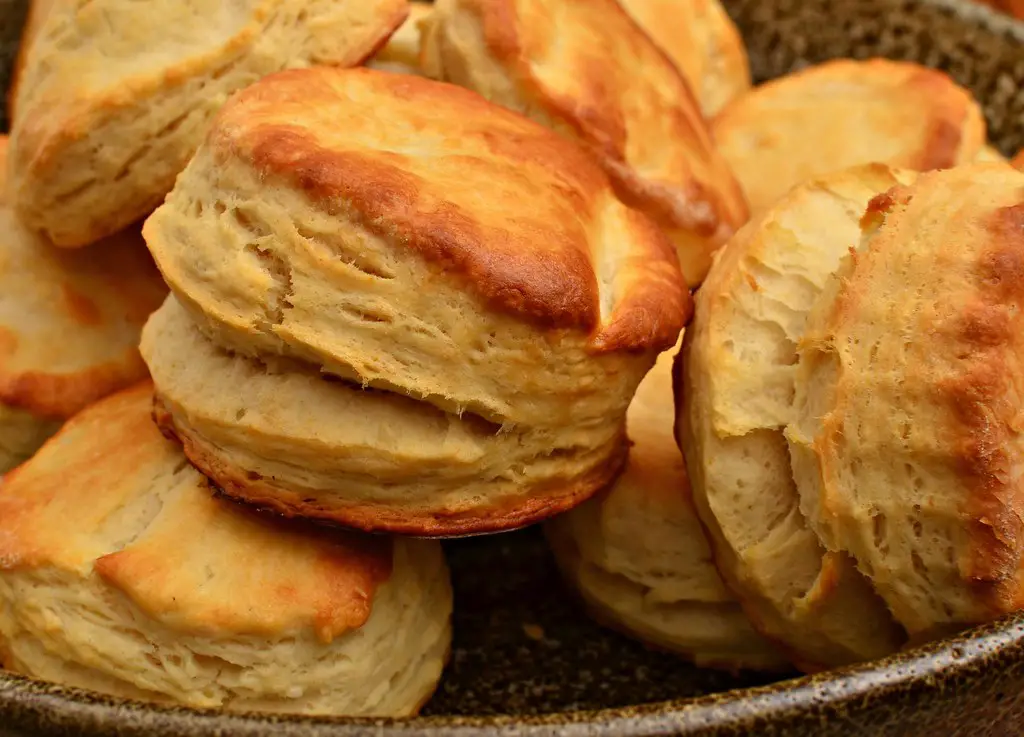
Making homemade buttermilk biscuits is a great way to enjoy fresh and delicious biscuits whenever you want. However, to ensure that your biscuits stay fresh and tasty, it’s important to store and reheat them properly. Here are some best practices for freshness and reheating techniques.
Best Practices for Freshness
To keep your buttermilk biscuits fresh, it’s important to store them in an airtight container at room temperature. This will help prevent moisture from getting in and making the biscuits soggy. You can also store them in the refrigerator, but make sure they’re in an airtight container and not exposed to any strong odors.
If you want to store your buttermilk biscuits for longer than a day or two, it’s best to freeze them. To do this, wrap each biscuit individually in plastic wrap or aluminum foil. Then, place them in an airtight container or freezer bag and store them in the freezer. When you’re ready to eat them, simply thaw them at room temperature for a few hours or overnight.
Reheating Techniques
When it comes to reheating buttermilk biscuits, there are a few different techniques you can use. One of the best ways to reheat them is in the oven. Preheat your oven to 350°F (175°C), place the biscuits on a baking sheet and heat them up for 5-6 minutes until warmed thoroughly. You can also brush them with melted butter before reheating for extra flavor.
Another option is to reheat your biscuits in the microwave. Wrap each biscuit individually with a damp paper towel and microwave them for around 20 seconds or so depending on their size. Just be careful not to overheat them, as this can make them tough and dry.
If you’re short on time, you can also reheat your buttermilk biscuits in a toaster oven. Simply place them in the toaster oven and heat them up for a few minutes until warmed through. This method works best for biscuits that have already been sliced in half.
Overall, storing and reheating your homemade buttermilk biscuits is easy and straightforward. By following these best practices and techniques, you can enjoy fresh and delicious biscuits anytime you want.
Troubleshooting Common Issues
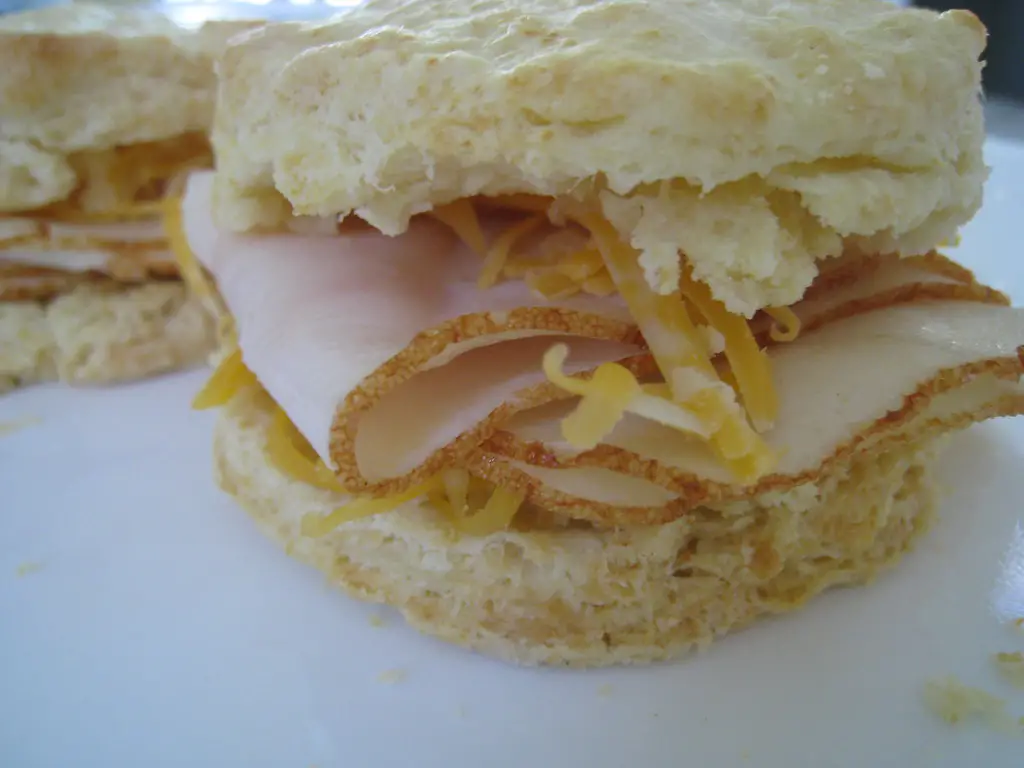
Making homemade buttermilk biscuits can be a rewarding experience, but sometimes things can go wrong. Here are some common issues and how to troubleshoot them.
Dough Too Sticky or Crumbly
If your dough is too sticky, it can be difficult to work with and may result in flat, tough biscuits. On the other hand, if the dough is too crumbly, the biscuits may not hold together well and could fall apart.
To fix sticky dough, try adding a little more flour to the mixture. Start with a tablespoon at a time and mix until the dough is no longer sticky. If the dough is too crumbly, add more buttermilk, a tablespoon at a time, until the dough comes together.
Another reason for sticky dough could be that you overworked the dough. When making biscuit dough, it’s important not to overmix it, as this can result in tough biscuits. Mix the dough just until it comes together, and then stop.
Biscuits Not Rising
If your biscuits aren’t rising, there could be a few reasons why. One common reason is that your baking powder is old and no longer effective. Baking powder loses its potency over time, so make sure you’re using fresh baking powder.
Another reason for flat biscuits could be that you’re not handling the dough properly. When you cut the biscuits, make sure you’re using a sharp biscuit cutter and cutting straight down without twisting. Twisting the cutter can seal the edges of the biscuit, preventing it from rising properly.
Finally, make sure your oven is at the correct temperature. If your oven is too hot or too cool, it can affect how the biscuits rise. Preheat your oven to the correct temperature before baking your biscuits.
By troubleshooting these common issues, you can ensure that your homemade buttermilk biscuits turn out perfectly every time.
Health and Dietary Considerations
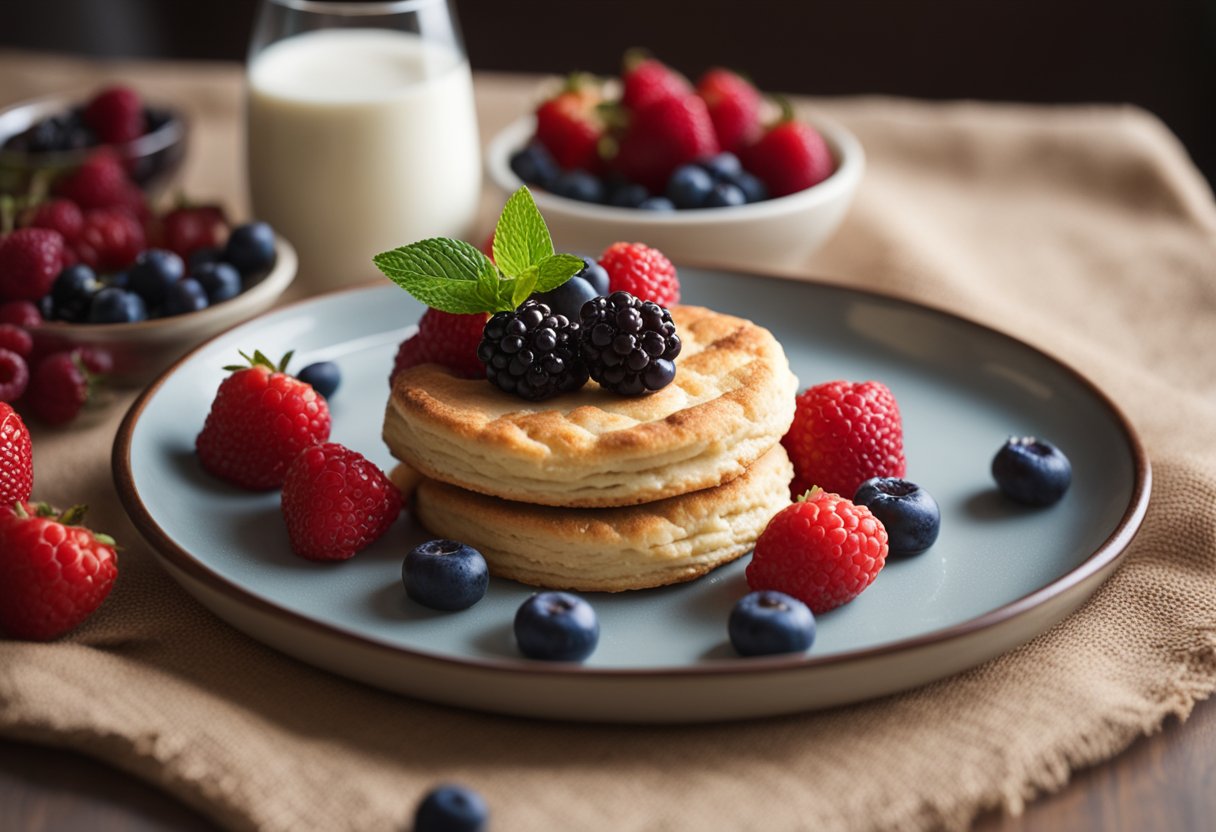
When it comes to homemade buttermilk biscuits, there are a few health and dietary considerations to keep in mind. In this section, we’ll cover some gluten-free alternatives and ways to reduce the fat content of your biscuits.
Gluten-Free Alternatives
For those with gluten sensitivities or celiac disease, traditional buttermilk biscuit recipes can be off-limits. However, there are several gluten-free alternatives that you can try. One option is to use a gluten-free flour blend, which can be found at most grocery stores. You can also use almond flour or coconut flour as a substitute, but keep in mind that the texture and taste may be slightly different.
Reducing Fat Content
Buttermilk biscuits are traditionally made with butter or shortening, which can be high in fat. If you’re looking to reduce the fat content of your biscuits, there are a few substitutions you can make. For example, you can use Greek yogurt or applesauce in place of the butter or shortening. Another option is to use a lower-fat milk, such as skim or 1%, instead of buttermilk.
It’s worth noting that while these substitutions can help reduce the fat content of your biscuits, they may also affect the texture and taste. Experiment with different substitutions to find the combination that works best for you.
In general, buttermilk biscuits are a delicious treat that can be enjoyed in moderation as part of a balanced diet. By making a few simple substitutions, you can make them a bit healthier without sacrificing flavor.
Enhancing Buttermilk Biscuits with Flavors
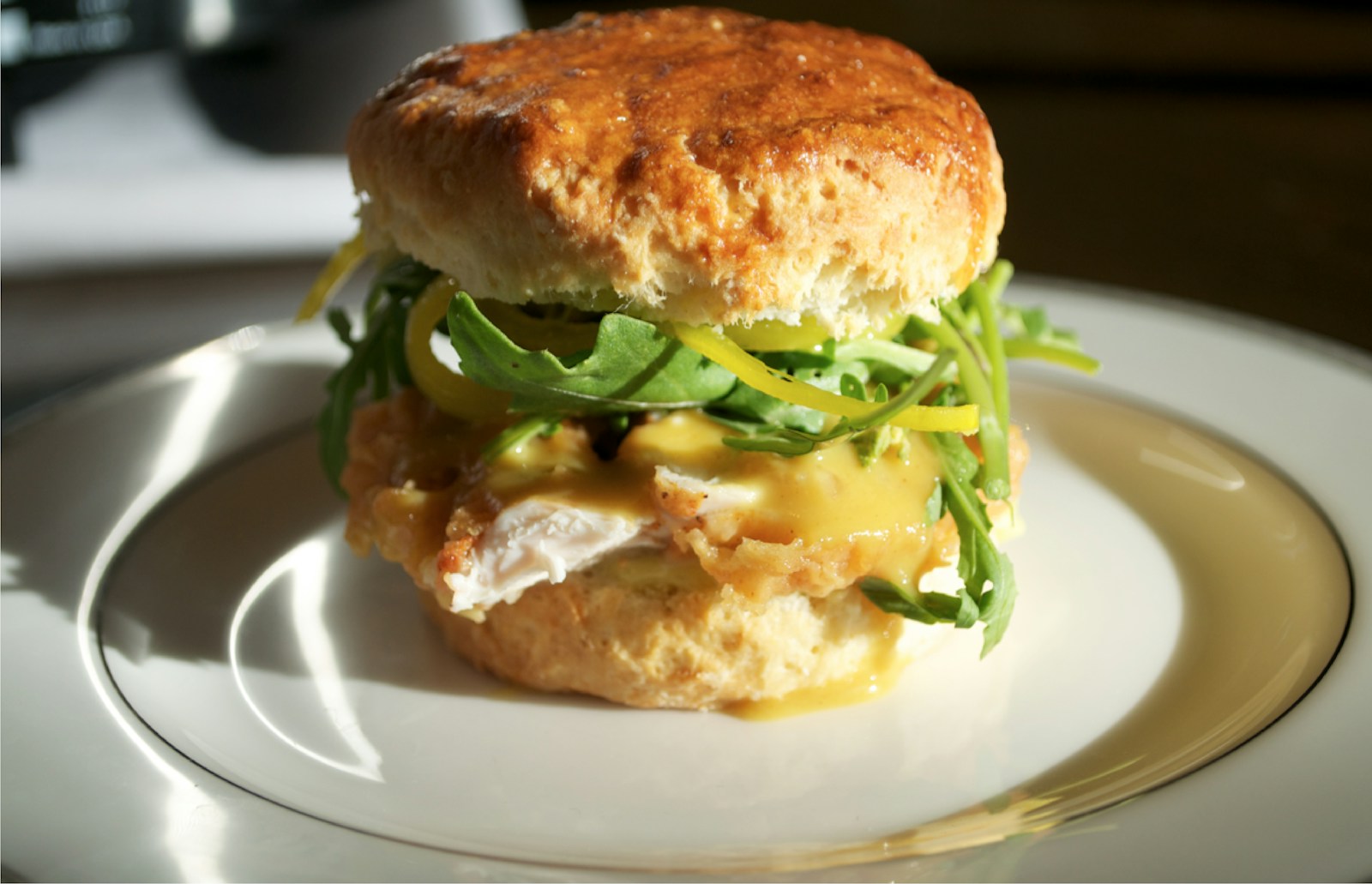
If you want to take your homemade buttermilk biscuits to the next level, consider adding some extra flavors to the mix. Here are some ideas to get you started:
Herbs and Spices
Adding herbs and spices to your buttermilk biscuit dough can give them a savory kick. Consider adding a pinch of rosemary, thyme, or sage to your dough, or mix in some grated Parmesan cheese for an extra burst of flavor. For a bit of heat, add some cayenne pepper or smoked paprika.
Here’s a table of herb and spice ideas to enhance your buttermilk biscuits:
| Herb or Spice | Flavor Profile |
|---|---|
| Rosemary | Earthy, piney |
| Thyme | Floral, lemony |
| Sage | Peppery, savory |
| Parmesan cheese | Salty, nutty |
| Cayenne pepper | Spicy, smoky |
| Smoked paprika | Smoky, sweet |
Sweet Variations
If you have a sweet tooth, you can also experiment with adding some sweet flavors to your buttermilk biscuit dough. Consider mixing in some cinnamon, nutmeg, or vanilla extract for a warm and comforting flavor. You could also try adding some dried fruit, such as cranberries or raisins, or even some chocolate chips for a decadent treat.
Here’s a list of sweet variations to try in your buttermilk biscuits:
- Cinnamon
- Nutmeg
- Vanilla extract
- Dried cranberries
- Raisins
- Chocolate chips
Remember to keep the keyphrase density of your article under 70 to avoid keyword stuffing. Adding too many keywords can hurt your SEO and make your article sound unnatural. By experimenting with different herbs, spices, and sweet flavors, you can create a unique and delicious twist on classic buttermilk biscuits.
Advanced Techniques for Biscuit Making
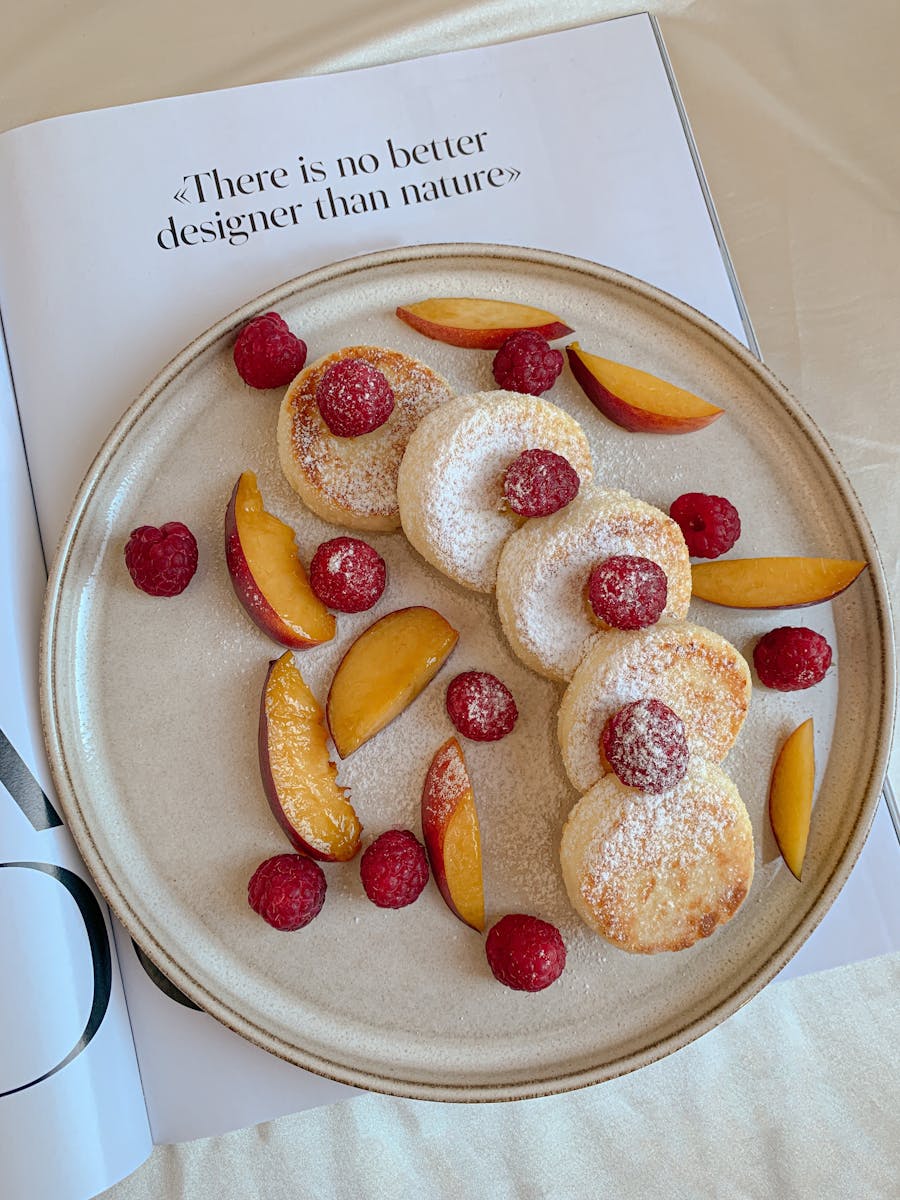
If you’re an experienced baker looking to take your buttermilk biscuits to the next level, there are a few advanced techniques you can try to achieve the perfect flaky texture and layered dough. Here are two techniques to try:
Layering the Dough
One technique to try when making buttermilk biscuits is layering the dough. This involves folding the dough multiple times, which creates layers of butter and flour that puff up when baked. To try this technique:
- Roll out your biscuit dough to your desired thickness.
- Fold the dough into thirds, like a letter.
- Rotate the dough 90 degrees and roll it out again.
- Repeat the folding and rolling process two more times.
By layering the dough, you’ll create a flaky, buttery texture that’s sure to impress.
Creating Flaky Textures
Another technique to try is creating flaky textures. This involves using cold butter and buttermilk, and being careful not to overwork the dough. Here are a few tips to keep in mind:
- Use cold butter straight from the fridge. This will help create pockets of steam when the biscuits bake, which leads to flaky layers.
- Cut the butter into small pieces and work it into the flour mixture using a pastry cutter or your fingers. Be careful not to overwork the dough, as this can lead to tough biscuits.
- Use cold buttermilk straight from the fridge. This will help keep the butter cold and create flaky layers.
- When rolling out the dough, be gentle and avoid overhandling it. This will help keep the butter cold and create flaky layers.
By using these techniques, you’ll be well on your way to creating the perfect batch of homemade buttermilk biscuits.
Frequently Asked Questions
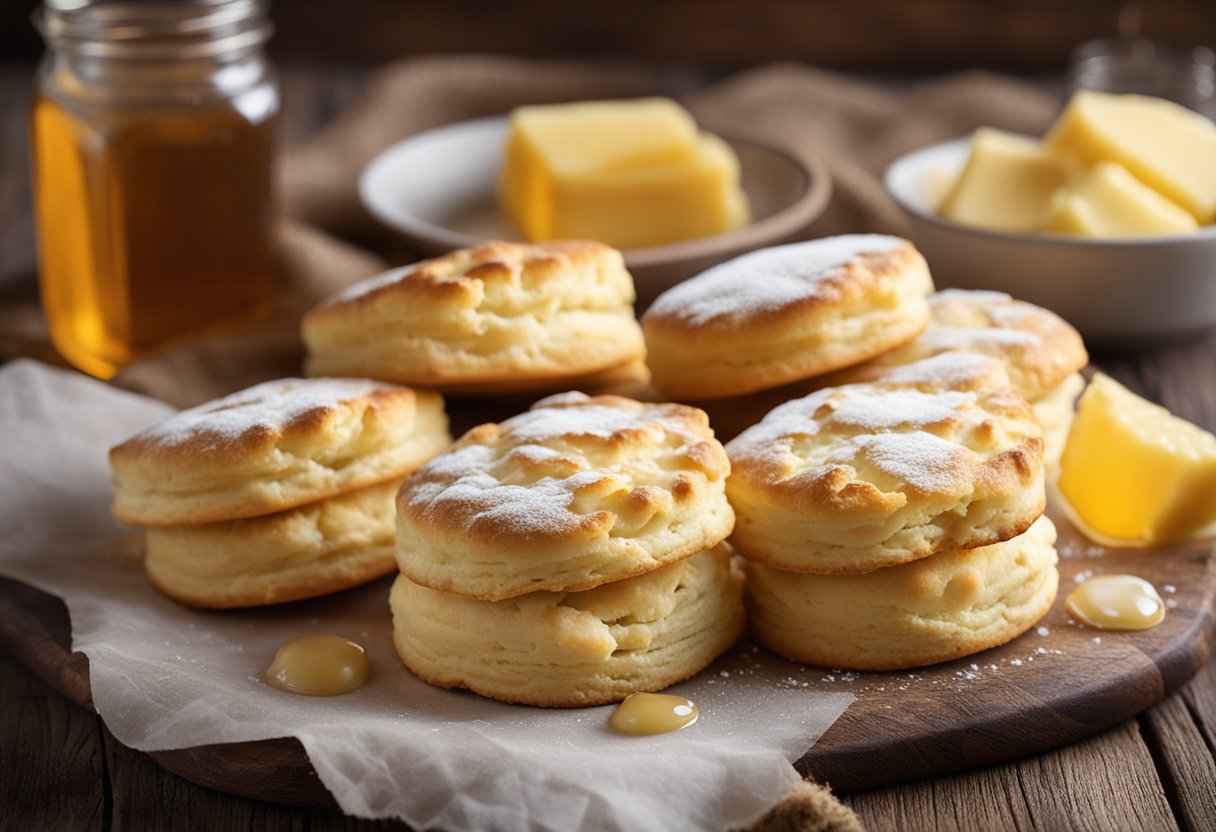
What is the secret to making flaky and tender buttermilk biscuits?
The secret to making flaky and tender buttermilk biscuits is to handle the dough as little as possible. Overhandling the dough can cause the gluten to develop, resulting in tough biscuits. Additionally, using cold butter or shortening and keeping the dough and ingredients as cold as possible before baking can help create flaky layers in the biscuits.
How do you make buttermilk biscuits from scratch?
To make buttermilk biscuits from scratch, you will need flour, baking powder, baking soda, salt, butter or shortening, and buttermilk. First, mix the dry ingredients together in a bowl. Then, cut in the butter or shortening until the mixture resembles coarse crumbs. Next, add the buttermilk and mix until just combined. Turn the dough out onto a floured surface and gently knead it a few times. Cut out the biscuits and bake them in a preheated oven until golden brown.
What is the difference between Southern style biscuits and buttermilk biscuits?
Southern-style biscuits are typically made with flour, baking powder, salt, and either butter or lard. They are often rolled out and cut into rounds before baking. Buttermilk biscuits are made with the same basic ingredients but also include buttermilk, which adds a tangy flavor and helps tenderize the dough. They are often dropped onto a baking sheet instead of being rolled out.
Which fat is better for making buttermilk biscuits: butter or shortening?
Both butter and shortening can be used to make buttermilk biscuits, and each has its own benefits. Butter adds flavor and a slightly crispy texture, while shortening creates a more tender crumb and helps the biscuits rise higher. Some recipes even use a combination of the two for the best of both worlds.
Can you substitute milk for buttermilk when making biscuits?
While buttermilk is preferred for making biscuits, you can substitute regular milk in a pinch. To make a buttermilk substitute, add 1 tablespoon of vinegar or lemon juice to a measuring cup, then fill with milk to the 1-cup mark. Let the mixture sit for a few minutes until it thickens and curdles slightly, then use it in place of buttermilk in your recipe.
What are some tips for achieving the perfect rise in homemade buttermilk biscuits?
To achieve the perfect rise in homemade buttermilk biscuits, make sure your baking powder and baking soda are fresh and not expired. Also, handle the dough as little as possible and cut the biscuits with a sharp cutter to avoid compressing the edges. Finally, make sure your oven is preheated to the correct temperature and bake the biscuits on the middle rack for even heat distribution.
External Links
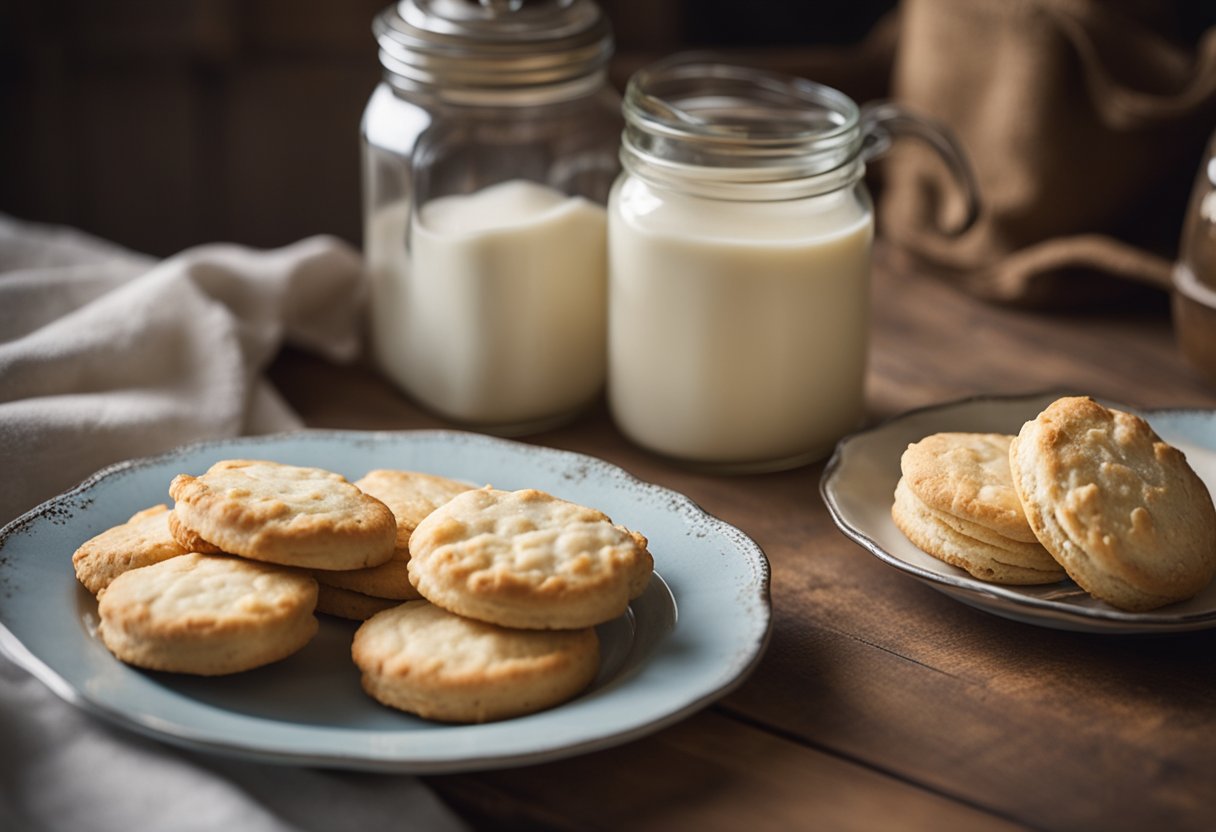
If you’re looking to expand your knowledge on homemade buttermilk biscuits, there are plenty of resources available online. Here are a few external links that you might find helpful:
- Sally’s Baking Addiction: This recipe blog has a great recipe for homemade buttermilk biscuits that only requires six ingredients. The recipe includes step-by-step instructions and photos to help guide you through the process.
- Live Well Bake Often: This food blog features an easy buttermilk biscuit recipe that’s perfect for beginners. The recipe includes tips for making the biscuits flaky and tender, as well as suggestions for variations like adding cheese or herbs.
- Spend With Pennies: This recipe blog has a simple recipe for homemade buttermilk biscuits that can be made in just 30 minutes. The recipe includes helpful tips for making the biscuits light and fluffy, as well as suggestions for serving them with gravy or jam.
- Savory Simple: This food blog features a recipe for homemade buttermilk biscuits that are both flaky and buttery. The recipe includes tips for making the biscuits rise properly, as well as suggestions for variations like adding honey or cinnamon.
- Kylee Cooks: This recipe blog has an easy recipe for homemade buttermilk biscuits that can be made in just 20 minutes. The recipe includes tips for making the biscuits light and fluffy, as well as suggestions for variations like adding bacon or chives.
These external links provide a variety of recipes and tips for making homemade buttermilk biscuits. Whether you’re a beginner or an experienced baker, these resources can help you perfect your biscuit-making skills and create delicious, flaky biscuits that are sure to impress.
More FAQs
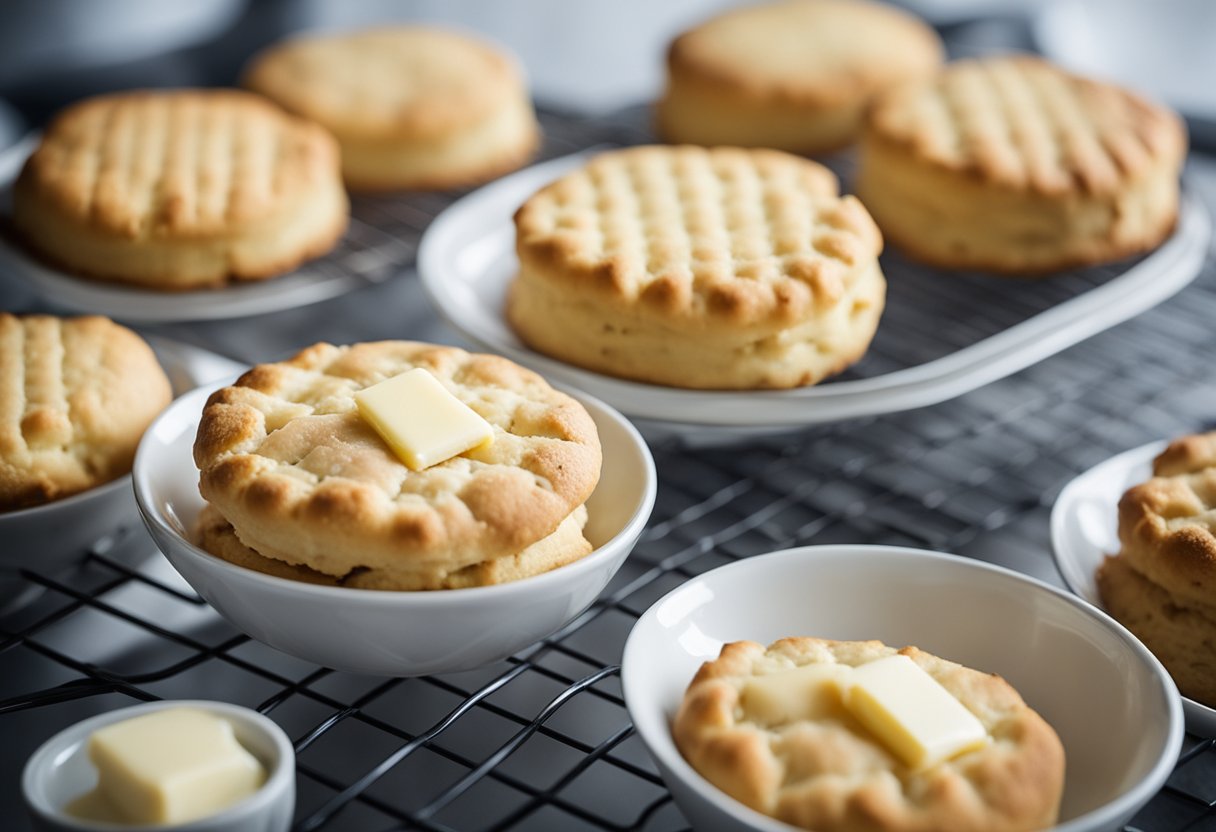
How does buttermilk affect biscuits?
Buttermilk is a crucial ingredient in making biscuits as it adds a tangy flavor and tender texture to the dough. It also reacts with the baking powder to create a chemical reaction that helps the biscuits rise. If you don’t have buttermilk, you can make a substitute by adding one tablespoon of vinegar or lemon juice to one cup of milk and letting it sit for a few minutes.
What is buttermilk biscuits made of?
Buttermilk biscuits are made of simple ingredients that you probably already have in your pantry. The basic ingredients include flour, baking powder, baking soda, salt, butter, and buttermilk. Some recipes may also include sugar or honey for sweetness.
What do you serve with buttermilk biscuits?
Buttermilk biscuits are a versatile food that can be served with a variety of dishes. They are often served with breakfast foods such as eggs, bacon, and sausage. They can also be served with soups, stews, and chili. Additionally, they can be used as the base for sandwiches, such as chicken or ham biscuits.
What do buttermilk biscuits taste like?
Buttermilk biscuits have a slightly tangy and buttery flavor with a tender and flaky texture. They are not overly sweet but can be enjoyed with sweet toppings such as honey or jam. They are also delicious when served with savory toppings such as gravy or cheese.
Conclusion
In conclusion, making homemade buttermilk biscuits is a simple and rewarding process that anyone can do. With just a few ingredients and some basic kitchen tools, you can create a delicious and satisfying breakfast or snack that will impress your friends and family.
Remember to use cold butter and buttermilk to ensure that your biscuits turn out light and flaky. Use a pastry cutter or food processor to cut the butter into the dry ingredients, and be sure not to overwork the dough. A light touch is key to achieving the perfect texture.
Experiment with different toppings and add-ins, such as cheese, herbs, or honey, to create your own unique flavor combinations. And don’t forget to serve your biscuits warm with a pat of butter or a drizzle of honey for the ultimate comfort food experience.
Overall, making homemade buttermilk biscuits is a fun and delicious way to bring a touch of Southern comfort to your kitchen. So why not give it a try and see for yourself how easy and satisfying it can be?
Print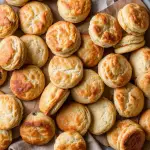
Homemade Buttermilk Biscuits Recipe
- Total Time: 27 minutes
- Yield: 12 biscuits 1x
- Diet: Vegetarian
Description
Buttermilk Biscuits
Ingredients
- 2 cups all-purpose flour
- 1 tablespoon baking powder
- 1/2 teaspoon baking soda
- 1/2 teaspoon salt
- 1/2 cup unsalted butter, cold and cubed
- 1 cup buttermilk, cold
Instructions
- Preheat the oven to 450°F (230°C). Line a baking sheet with parchment paper.
- In a large mixing bowl, whisk together the flour, baking powder, baking soda, and salt.
- Add the cold, cubed butter to the dry ingredients. Using a pastry cutter or your fingers, quickly incorporate the butter until the mixture resembles coarse crumbs.
- Make a well in the center of the mixture and pour in the cold buttermilk. Gently stir until just combined; do not overmix. The dough will be sticky.
- Turn the dough out onto a floured surface. Pat it into a rectangle, then fold it in half. Repeat this process two more times.
- Roll the dough to about 1/2 inch thickness. Using a round biscuit cutter, cut out biscuits and place them on the prepared baking sheet, making sure they touch slightly for soft sides.
- Bake in the preheated oven for 10-12 minutes or until the biscuits are golden brown on top.
- Allow the biscuits to cool slightly before serving.
Notes
For extra flakiness, ensure the butter and buttermilk are very cold. Serve these delicious buttermilk biscuits with butter, honey, or your favorite jam.
- Prep Time: 15 minutes
- Cook Time: 12 minutes
- Category: Side Dish, Bread
- Method: Baking
- Cuisine: Southern
Nutrition
- Serving Size: 1 biscuit
- Calories: 150
- Sugar: 0.5g
- Sodium: 350mg
- Fat: 8g
- Carbohydrates: 18g
- Fiber: 0.5g
- Protein: 2g
- Cholesterol: 20mg
Keywords: Homemade Buttermilk Biscuits
